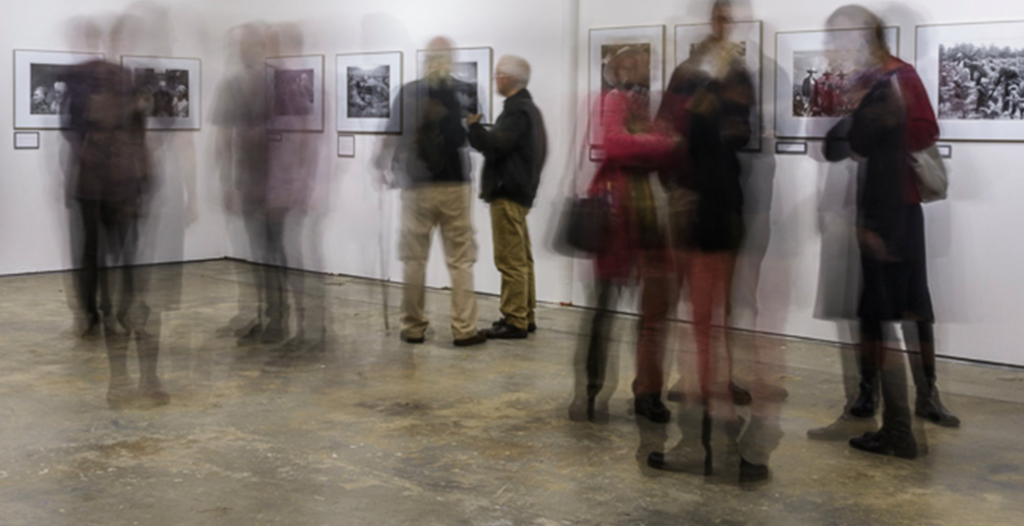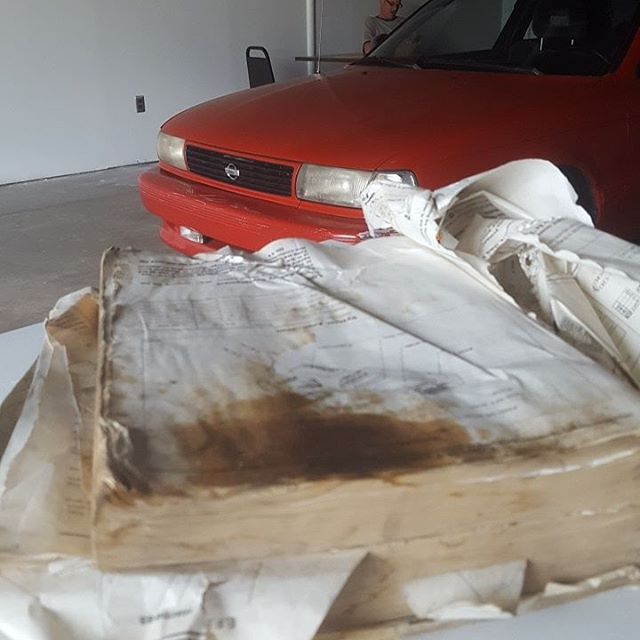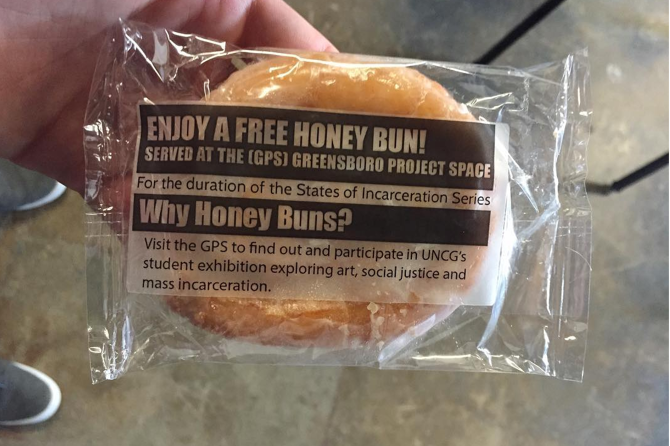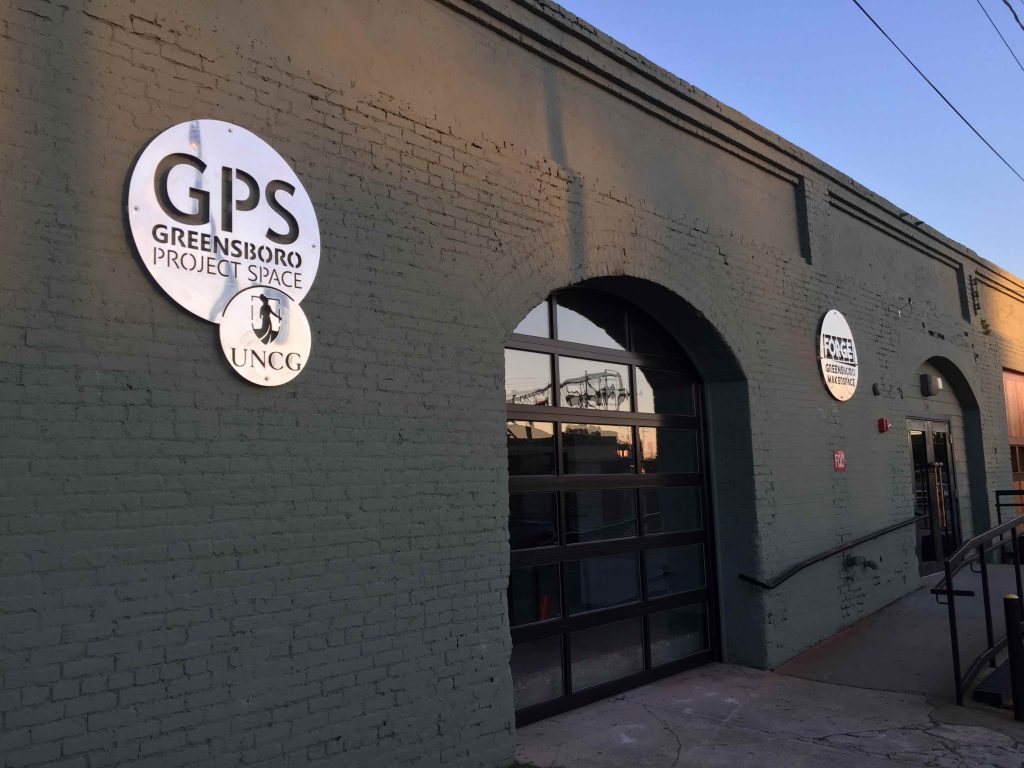Program Report: Greensboro Project Space
February 16, 2017
Text by Adam Carlin

A Little Less Art
Today, the team at Greensboro Project Space (GPS) sat around our reception desk researching the logistics of breaking a Guinness world record. Let’s back up a second. Greensboro, NC is a small town. As a curator from big cities, my perception of public programs had to switch to not only what kinds of experiences to make for the public, but how I can build into them a mechanism to attract the public. The usual social practice and curatorial tools I use just weren’t enough.
Typically the goal was to create projects that are engaging, and offer new experiences that break through the monotony of the everyday. I say engaging often enough that sometimes I need to stop and examine what it means to me. Engaging for me means a sort of mental or physical investment in a project. It could be a good investment (good engagement) or bad investment (bad engagement) but nevertheless, an investment (engagement). This means that the public can participate in the project, or be responsible for creating the project of their own volition. At a base level, this is still my primary methodology, but the thing that is missing only revealed itself as I tried to fit the same projects into a different context. I can easily generate engaging scenarios, but how do I convince people that they need it?

The thing that has struck me the most is that considering the rallying of individuals for a project, greatly effects the project itself. I’ve found that this new element brings in a necessity that is sometimes overlooked. I make work for people, and I often take for granted that people are sitting around waiting for me to bring them something to digest. Our big idea is to not only create experiences designed for people, but to make projects that act as a resource. This resource doesn’t only act as way to bring people into the space, but can be a creative apparatus to construct new and exciting projects. It could be simple. In our latest exhibition about incarceration, we handed out free honeybuns to anyone who came into the space. Honeybuns act as a form of currency in contemporary prisons and jails. Not only do we have a great conversation starter to expound the important data regarding the politics of incarceration, but we can feed people in our neighborhood who are hungry.

The Guinness Book of World Records investigation came from sitting around a reception desk with my team, acting as a think-tank trying to solve simple problems with big and creative ideas. The easy question we asked, is how do we get a huge amount of people to come into our space? The more nuanced form of the question is, how do we convince people that they belong in a space like this? We have found that the answer is to become a resource that stems from the specific needs of a community. Surprisingly, the resources that I have used to bring people in are not art most of the time. This isn’t intentional, but comes about through a realistic purvey of the needs of the people in Greensboro. Art can do a lot, but compared to the spectrums of wants and needs it seems to fall low on the list. I’d say, about 10% percent of people in Greensboro enter into art spaces (this data may or may not be sarcastic). Because we are an art space that focuses on social engagement, collaboration, and participation, this is an alarming realization. More and more we think that fitting into the categorization of ‘art’ is the corrupter that is making us work against our interests. Our goal now is to not figure out how to be different from a gallery, but how to remake ourselves continuously for the different needs of our communities.
Through breaking a Guinness record, we can turn GPS into a kitchen that is baking the world’s largest apple pie, a zoo that is inhabited by the most amount of people holding a ball python with one hand, a greenhouse where the biggest amount of people simultaneously work on a bonsai tree, and a variety of different spaces that acts as an exercise in impermanence. The next time we sit around the reception desk brainstorming the intricacies of community engagement, our first hurdle will be to achieve the unthinkable; purging the perception of GPS as a space to view art. Only then, can we be free to become whatever is necessary, and needed.



